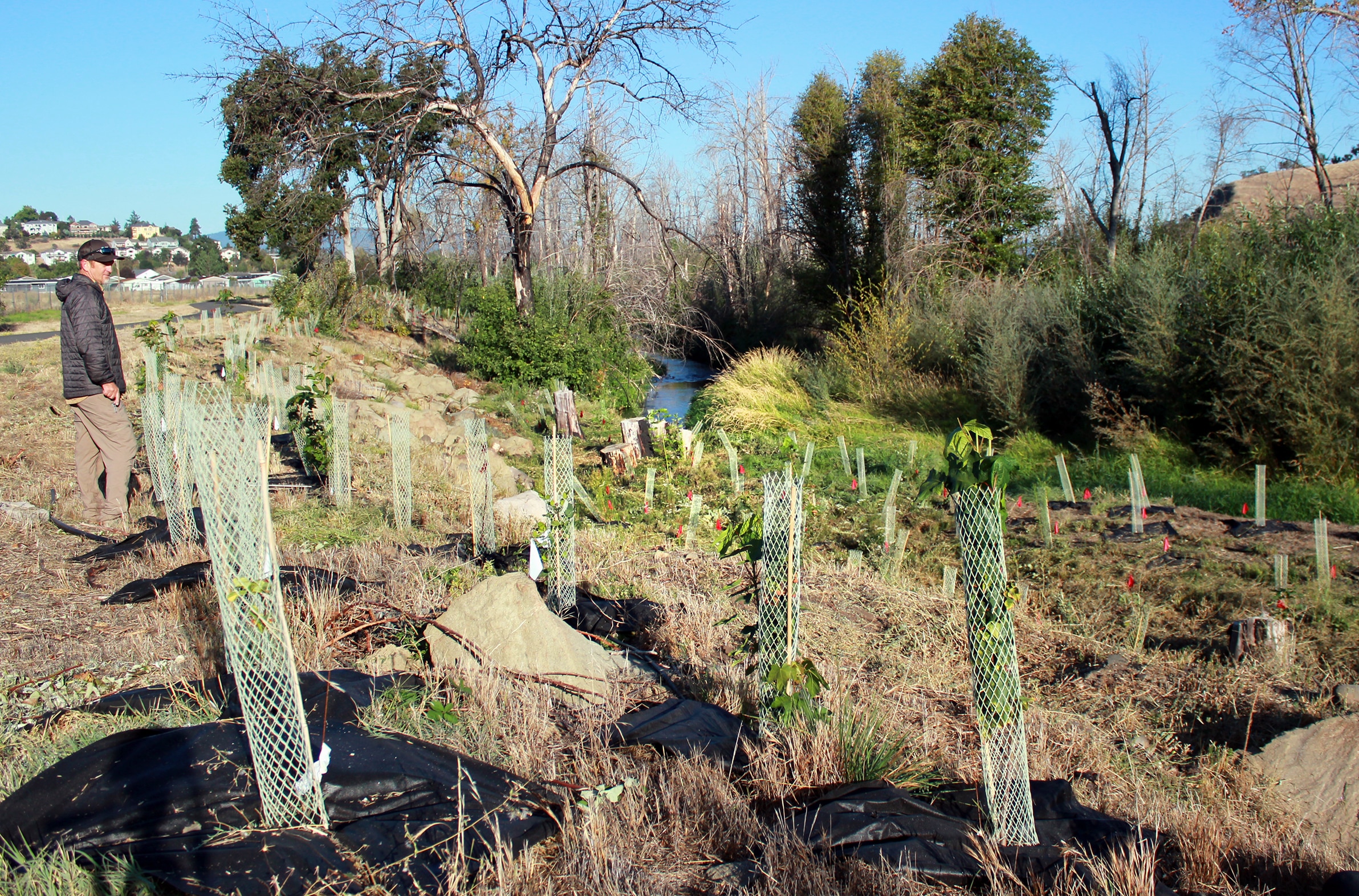More Riverside Restoration with Less Water
November 27, 2023
Southern Oregon is drier than many parts of the Beaver State, with a warm and arid climate more like northern California. Water availability for agriculture, industry or communities has always faced challenges and limitations. Restoration practitioners attempting to reestablish streamside (or riparian) forest in areas where trees were historically abundant also face these water challenges.
In the past, feats of engineering helped create a more predictable water supply in Southern Oregon using conveyance canals and storage reservoirs for snowmelt from the Siskiyou Mountains. These systems allowed a robust agricultural industry to develop around pears, apples, and other farm products.
However, over the last couple decades, snowmelt has become less predictable. During some years, irrigation seasons were either cut substantially short or there were simply no water deliveries. This has spurred changes in crop types and irrigation techniques within agriculture. And concern over supply is influencing how we look at water availability for restoration projects.
The Freshwater Trust has used consistent irrigation to sustain many successful riparian restoration projects in the Rogue River basin. Efficient drip irrigation systems, run for three to five years, help native plants establish and grow quickly enough to outcompete invasive plant species and browsing wildlife that surround them.
Yet it has become challenging to acquire water and maintain irrigation systems.
Construction and operation of the irrigation system is often the most expensive part of the restoration project. Water from irrigation districts is in limited supply. Water from municipal sources is more stable but comes at a greater cost.
There is another source for water. In nearly every watershed in Oregon there are places where natural hydrologic processes still exist in whole or part. In these areas, natural floodplain connections allow streams to overflow their banks regularly, depositing silty loam and forming deep, rich soils. This process supports the establishment and development of a healthy riparian forest.

At some project sites along Bear Creek, we are using the natural process of floodplain inundation and saturation to support the plantings without additional irrigation. Starting in summer 2023, successive waves of plantings over a three-year period, combined with targeted control of invasive weeds, are being used to establish native cover across the site. Without needing to follow the linear layout of the irrigation system, we have more freedom to follow landforms and hydrozones with appropriate plant species, creating a more natural look and mix of plants.

Implementation of a site along Bear Creek between the cities of Phoenix and Medford for the Ashland water quality trading program. A wide section of floodplain still functions naturally. The soil is deep, the stream is sinuous, and banks overflow every one to two years. Newly planted vegetation can get established without supplemental irrigation.

At other riparian restoration sites, we use a more typical approach, installing drip irrigation and placing the plantings where they will be serviced by a dripper. This ensures that each plant will survive and thrive in a rockier terrain further away from the natural water level.
Natural floodplain processes also help maintain the conditions that develop healthy forests over time. Placing large wood instream, opening side channels, removing old dikes and dams, and supporting beaver re-colonization improves the floodplain functions that sustain riparian forests. These floodplain locations may represent a small portion of the land that needs restoration, but they become sustainable anchors in a watershed where native plant materials, including seeds, can be sourced and naturally dispersed.
A site along Bear Creek near river mile 14 has given us an opportunity to test out non-irrigated establishment techniques. At more than one mile long and nearly 13 acres in size, this project is our largest restoration site in the Rogue River basin. This project, if not within an area possessing natural floodplain function, would likely have been too large and costly to attempt.
We are taking what we learn to help us adapt to a water-scarce future where restoration can continue independent of tight water supply and municipal and agricultural needs.
Most locations needing streamside forest restoration do not have sufficient natural floodplain processes; supplemental irrigation during the establishment phase will still be needed. But where natural processes do exist, or where they can be reinvigorated, then we can implement high-quality restoration projects at a lower cost and a lighter water footprint.
With water abundance becoming increasingly unpredictable, and the cost to provide water increasing each year, the time is right for using multiple, sound restoration techniques.
#drought #irrigation #Rogue River #southern Oregon
